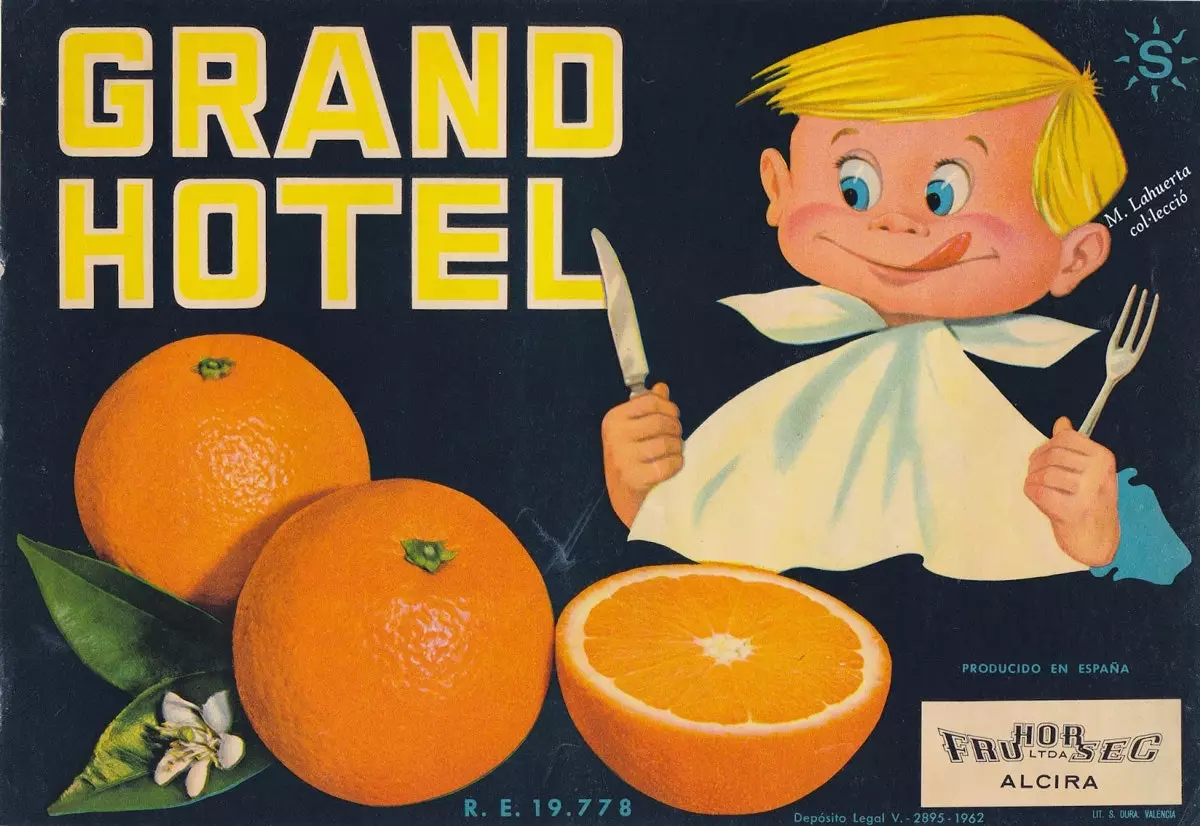
The Fruhorsec label, printed in S.Dura (Valencia) in 1962
This is a daily picture: go to the greengrocer, take an orange, take the label , peel it and eat it. And what do you do with the adhesive? You hook it momentarily on your forearm or maybe someone's forehead, get rid of it immediately, or, like that old man I once saw on the Barcelona subway (and who inspired this article), decorate a cane with all the fruit stickers that pass through your hands.
If you do none of the above you have something in common with the collectors of fruit labels, with the difference that they conserve, classify, exchange and store with great care fruit labels from all times and countries, passionate about their esthetic and for the history that has stuck to its underside.
There are them all over the world and, because Spain is also the world, we have spoken with some of them to understand this hobby which, like any collecting activity, is a way of making the past present, of organizing history in an alternative way and of freeing objects from the function for which they were created, as Walter Benjamin would say in Luis Felipe or the interior and in El Coleccionista, two fragments of the also fragmentary Libro de los Pasajes.
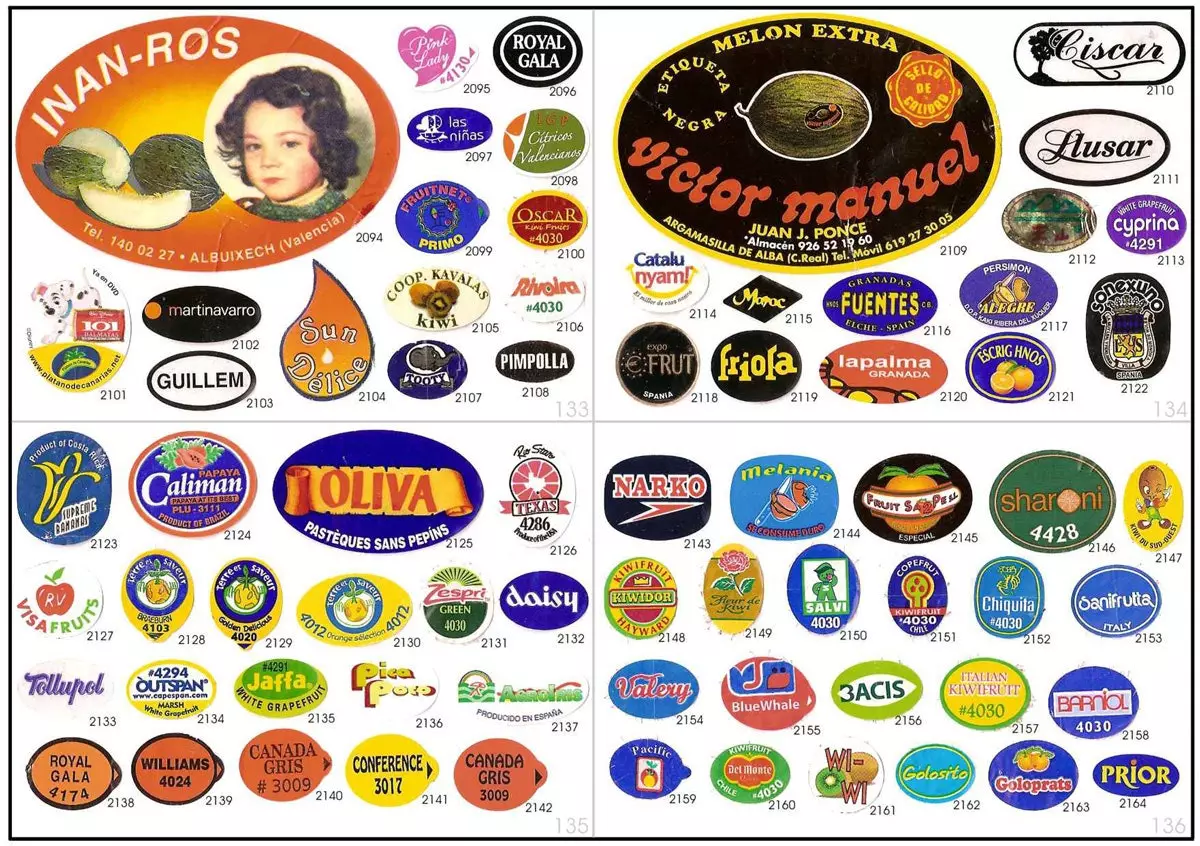
Fruits and labels, a constant design idyll
“It's a hobby that reminds me of how hard life must have been. orange marketing in another time," he says. Manuel Lahuerta , specialized in the collection of labels, silk paper and posters of the orange companies of Burriana (Valencia). Lahuerta started his collection 30 years ago and believes that, in the past, the designs were better, "especially from the beginning of the 20th century to the 40s and 50s. In the 60s, the labels suffered a decline and practically began to disappear.
Lahuerta wants to vindicate the role of the designers of fruit labels. “They are the great forgotten. People like A. Peris, J. Sanchís, Juanino, Fenoll, A. Carot, Masia and many more worked for the printers and their names did not appear on the labels”.
"Many times it was about artists who did not want to sign their works because they considered them a very minor art", comments Carlos de The Paper Orange , another collector, in this case focused on tissue paper and fruit boxes. “All labels and tissue paper have their pretty side, some for their graphic design and others because they are true artworks ”, he considers. "In many cases, exporters who traveled abroad used the image of well-known personalities, comics or everyday situations to create their brand, while also creating a job market for illustrators."
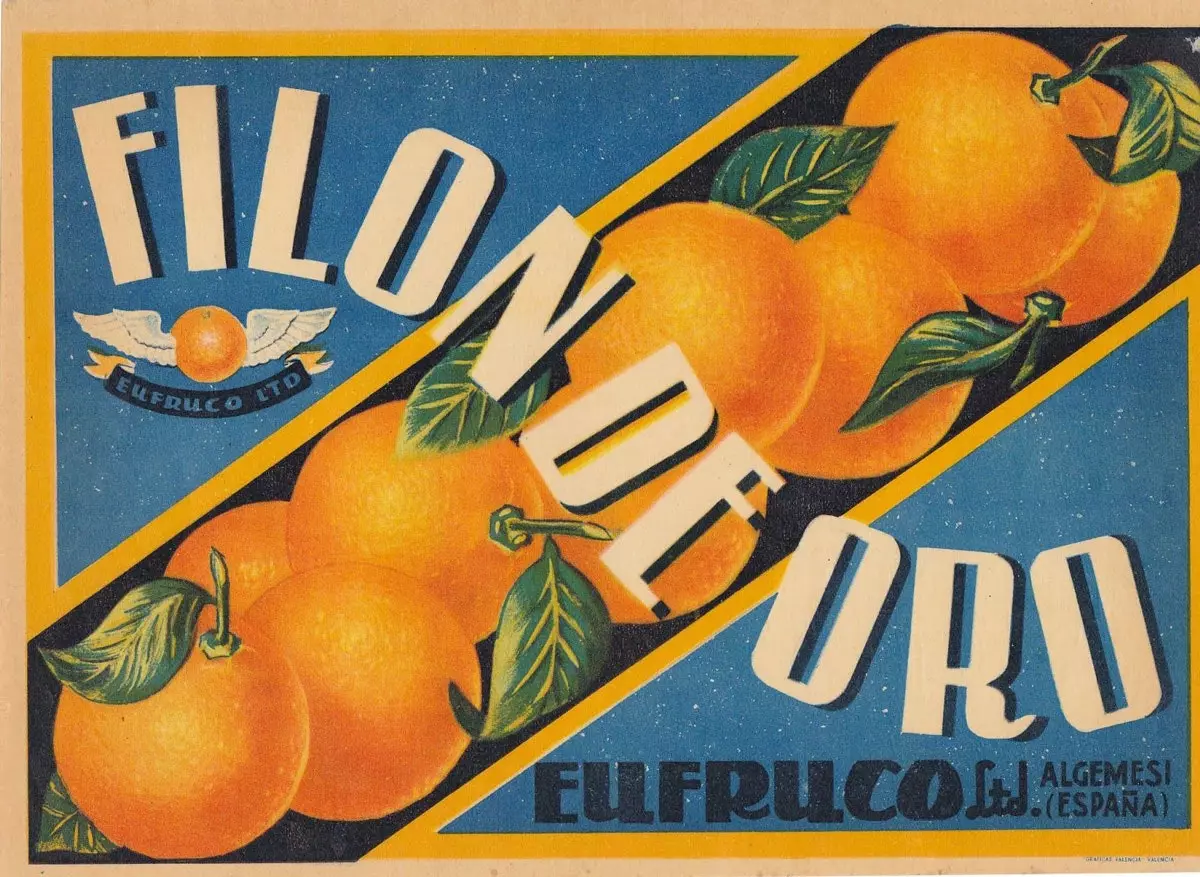
Old poster of Valencia oranges
It was precisely that beauty that stimulated the desire to Alfredo Massip to start his collection of labels, stickers (or fronts, because they were placed under the handles), tissue papers that cover the oranges and old climbers or templates: “I found these marvelous illustrations very curious. They put a lot of effort into making the oranges stand out from the rest and sell better.”
"I live in land of oranges and before it was common that, at the age of 12, you were walking through the main square on a Friday and the foremen assaulted you to ask you if you wanted to go pick oranges on Saturday or Sunday. That was a moment that many families were waiting for, since it meant extra income.” That is why Alfredo, being so in contact with oranges, has always collected some other object. However, he affirms that for three years he has begun to investigate more vigorously.
Also in love with the old labels from the beginning of the 20th century, this collector comments that this “is a hobby that fills me , especially in this time of pandemic, and with which I have gotten to know a lot of people, especially with silk paper, since there are collectors in practically all European countries.
The largest collection of fruit labels in Spain
"I started my collection in 2002," he says. Miguel Sanchez . “Although, actually, my son started it. On Sundays we go to the street market in Canovelles to buy fruit and vegetables and, when my son was five years old, he would take labels and stick them on his shirt. When he got home he would take them off and put them in sheets and, when he added about 400, I told him to organize them better”.
That innocent gesture led Miguel to explore the world of collectors of tags: he found other fans like Carmelo, very close to his city. “He came with an envelope full of labels and offered me to take whatever we wanted. But my son began to see that this was a lot of work for him and that I should continue”.
Gradually, Miguel's collection of fruit labels grew until it became the largest in Spain and one of the largest in Europe, with approximately 70,000 labels , among which are those of Carmelo, who has already passed away.
Miguel's story with the collectibles of fruits comes from far away: “when I was 18 years old, my father opened a greengrocer's, which we used to go to Mercabarna . So there were some plates that they gave you with each container, for when you returned it they would pay you its price. I thought they were very pretty and I started collecting them.”
Today, those plates no longer exist, but Miguel still goes to Mercabarna about twice a year to collect labels, especially in summer, when he finds the labels of his favorite fruits: citrus and melons . “Sometimes I have gotten angry, because they tell me that they cannot be taken, but when I call the printers or the greengrocers to send them to me, they rarely agree.
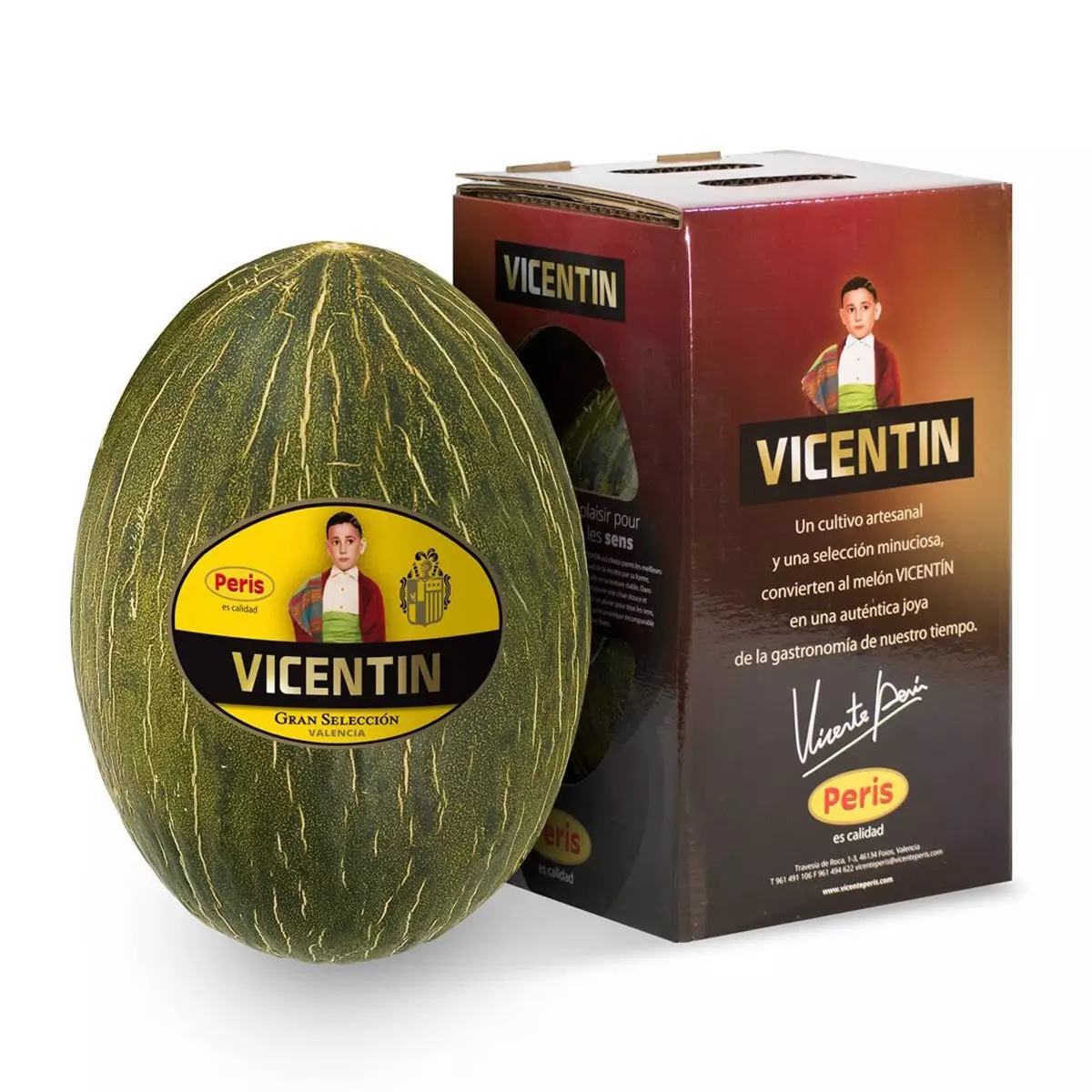
The traditional design of one of the melon brands in Spain
labels everywhere
Jesus Flowers he also found his collecting passion from an orange label. "I don't remember the exact day this madness started, but I'm not too far wrong if I go back to 1980 or 1982," he explains on his website. “I only know that I was no more than 14 years old. I was enjoying a few days at camp valley head , a small town in Cáceres, and at dessert time it occurred to me to take the sticker of an orange and paste it on the plastic strap of my watch. He was with me the rest of the vacation… until I got home.”
That was the first sticker (which it still has) of the envy brand , and ended up stuck to the base of an ashtray, where he continued to stick more labels of the fruits that were eaten in his house. the brand labels Santa Martina, Mirian and Brindis they began to accumulate in those few centimeters for years, until he decided to start pasting them on sheets and then gradually organizing the collection to make it more manageable.
“I feel a special taste for the first label I got. Maybe it's longing! Also the stickers on leaf shape They have caught my attention." Flores explains that for him, this hobby that It does not cost money (collectors change some labels for others, without monetary transaction), has made him feel great joy: “I like to see the labels in his album, placed, and with that variety of colors. And, at the time, he felt a lot of satisfaction when he got new ones ”.
Returning to Benjamin, it is worth taking into account his assessment that "for the collector, each particular thing becomes an encyclopedia that contains all the science of the time, the landscape, the industry and the owner from whom it comes". In this sense, Carlos's collecting combines family and local history . “My grandmother always told us about her father, who was dedicated to exporting oranges, and told us stories about the family. We even had a hanging painting that framed the label of the cock oranges”.
“Later, my parents found the original label of the brand homer at a flea market, which made me think that maybe more could be had. Little by little I found others of the family and, to know names and brands, I ended up researching until I went back to the year 1700 of family genealogy”.
It is not possible for Carlos to choose a favorite among the objects in his collection: “they all have something special, each brand has a family history”. He also says that it saddens him that today's graphic designers don't look more into the past and discover this legacy.
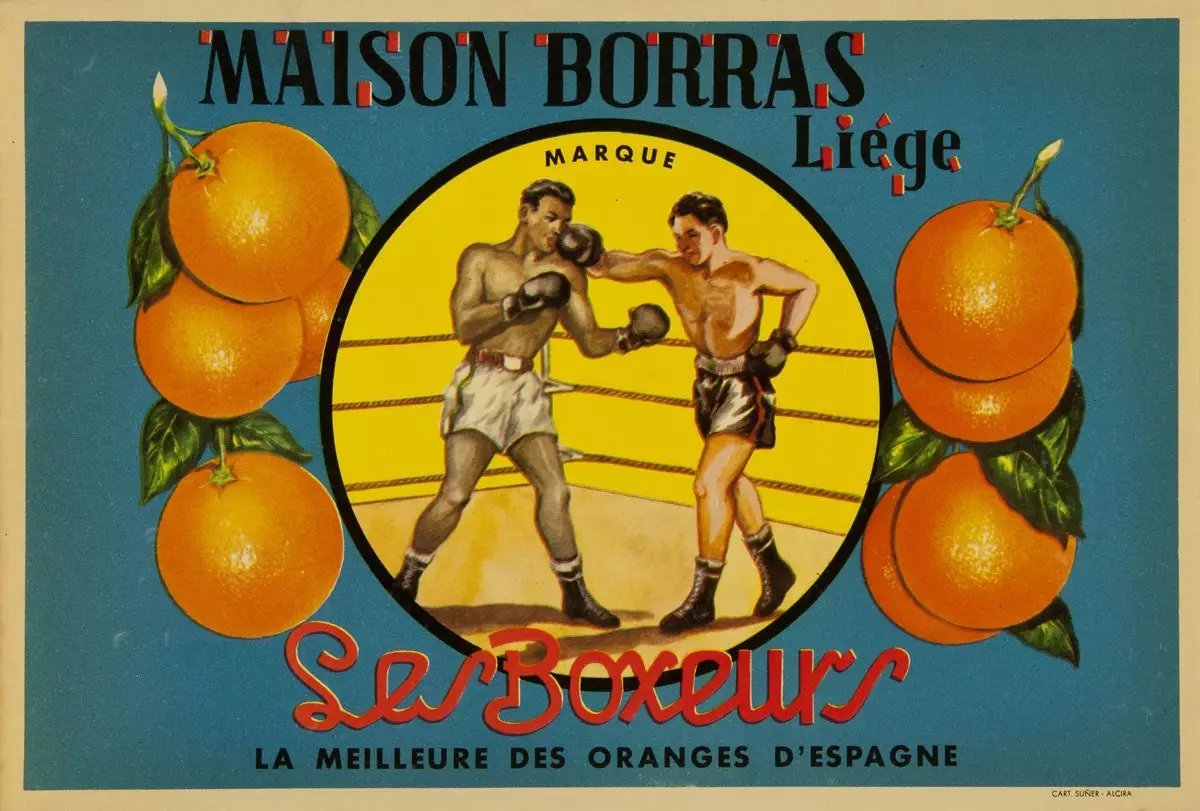
Valencia with french stamp
The designer's opinion: a unique element
Adrià Ventura, a graphic designer with a taste for costumbrismo, believes that "fruit labels are a single item . On the one hand, because they are placed on a support (the piece of fruit itself) which in itself already gives a lot of information about the product”. To put it another way, the fruit does not need more packaging than the label!
"And on the other hand, -continues the designer- because they are one of the elements that sneak into our homes most massively and with which we are forced to to interact (unhooking the labels), so we end up paying little or a lot of attention to them”. In his opinion, the producers have not been giving too much importance to the design of the labels "which means that the designers have had a lot of creative freedom and in that we find a wide range and very curious aesthetically. The limitations of the label (size, shape, adhesive and waterproof paper, flat colors) have generated, in turn, a quite unique and recognizable style.
Ventura indicates that the designs of the labels have followed, more or less, the graphic styles of the moment, a fact that is especially noticeable in the fonts used. And has there been any improvement? "Yes! Who does not remember that impossible to unhook label? There has been a positive evolution in the printing, paper and glue systems”.
